USB Desktop Charger 12A
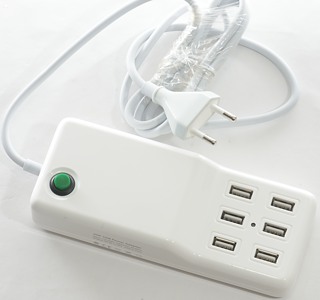
Official specifications:
- Support devices: iPad, iPhone, iPod, MP3 Players, Digital Cameras, PDAs, Mobile Phones (Samsung, HTC, LG, Nokia, Blackberry, Sony, Huawei),bluetooth headset,mini speaker and external power bank.
- Input: 100-240V 50/60HZ
- Output: USB*6 5V
- Maximum output: 12A
I got this charger from ebay dealer: flashman852
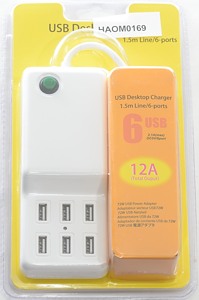
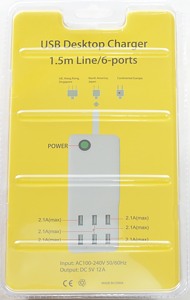
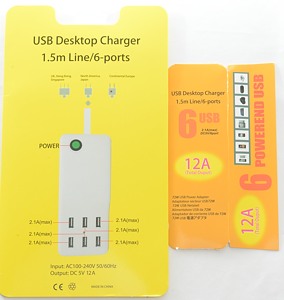
I got this charger in a retail package.
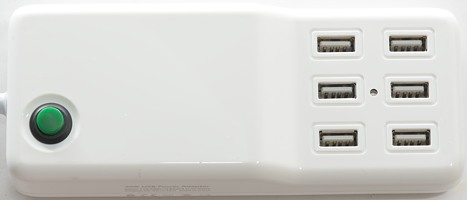

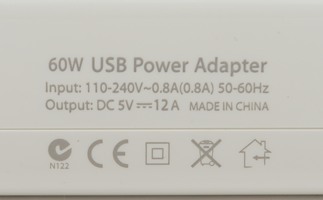
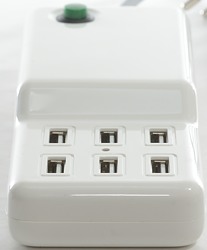
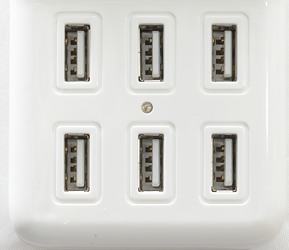
Measurements
- Standby power is 0.4W when on and 0W when off.
- All outputs are in parallel.
- Coding top row: USB charger (DCP), Apple 1A, Apple 2.1A
- Coding bottowm row: USB charger (DCP), Apple 1A, Samsung Tablet
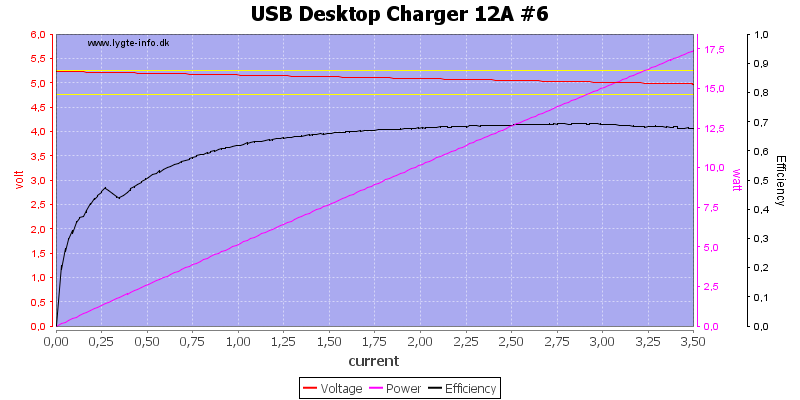
First test is on a single connector, it does not look like it has any individual protection.
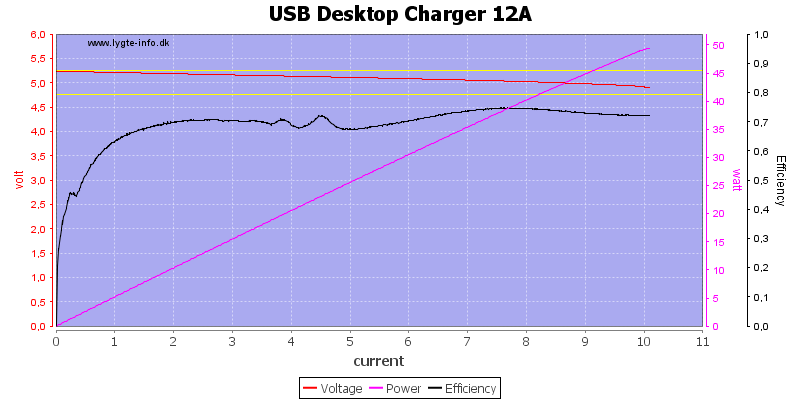
Doing all connectors at once I can increase the current, but not up to the promised 12A, protection kicks in at 10A. It is less than specified, but more than I believe anybody will be using.
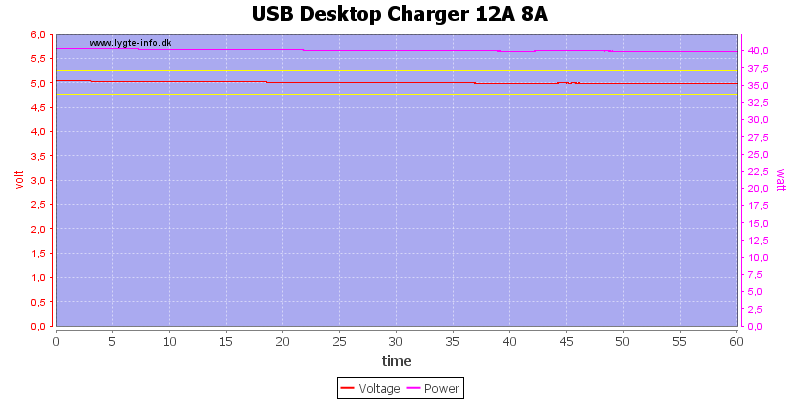
To be reasonable with the output loads I decided to test at 8A, if it stays cool I can always do another at a higher current.
The 8A load was handled fine, except it did not stay cool (See photos below).
The temperature photos below are taken between 30 minutes and 60 minutes into the one hour test.
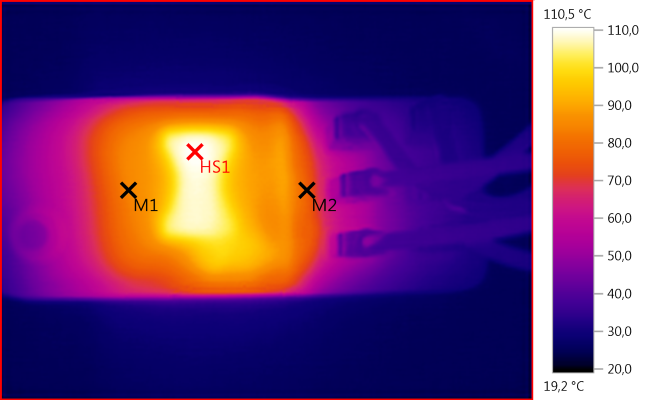
M1: 84,0°C, M2: 77,4°C, HS1: 110,5°C
It looks like it can be used to keep coffe warm. It is the transformator that is really hot.
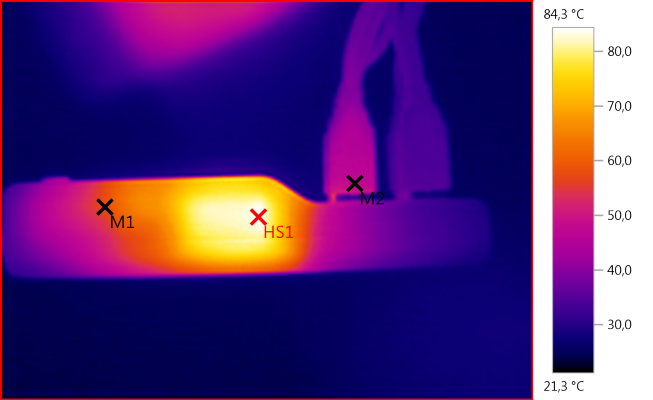
M1: 57,4°C, M2: 47,5°C, HS1: 84,3°C
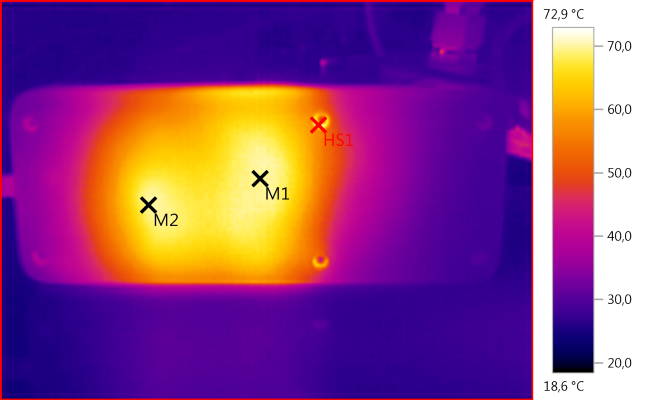
M1: 69,9°C, M2: 69,7°C, HS1: 72,9°C
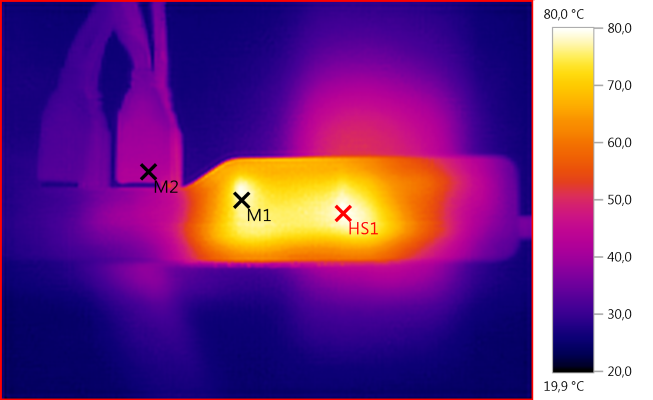
M1: 78,0°C, M2: 41,9°C, HS1: 80,0°C
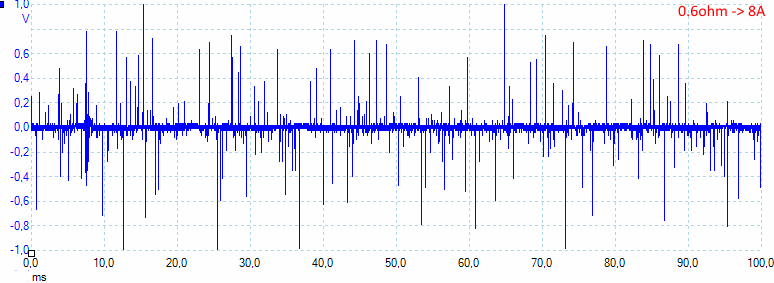
With a 8A load the noise is 70mVrms and 2300mVpp.
The rms noise is acceptable, but the peak-peak noise is way to high.
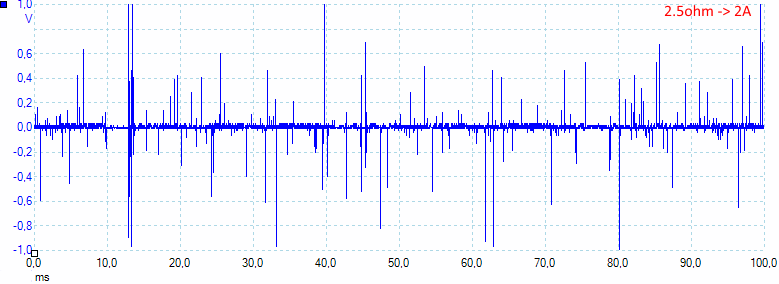
Reducing the load to 2A the noise is 60mV rms and 3200mVpp, i.e. lower rms noise, but higher peak noise.

With 0.5A load the peak noise increases even more: 48mV rms and 3500mVpp
Tear down
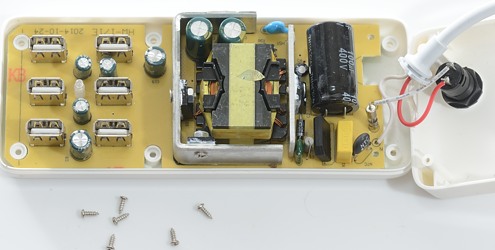
This unit was fairly easy to open, I just had to remove 6 small screws.
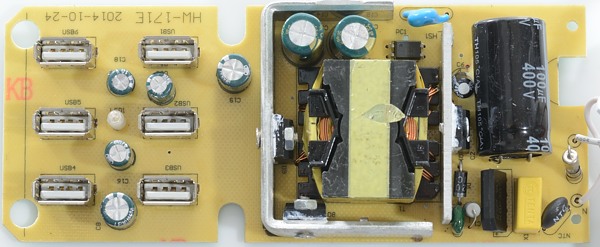
It contains a big transformer for the many amps, the mains capacitor is also fairly large.
The input is protected with a fuse and a NTC.
Both the switcher transistor and two diodes on the low volt side have a heatsink.
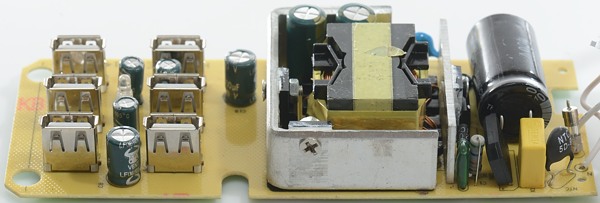
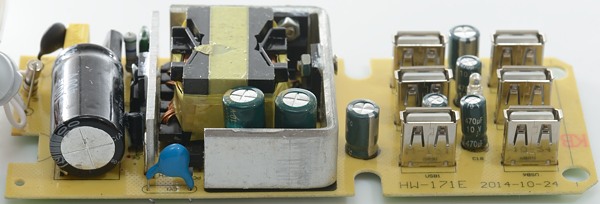


The capacitors besides the transformer is marked 105°C, but when the transformer heats the outside of the box to 110°C, they are not going to last long.
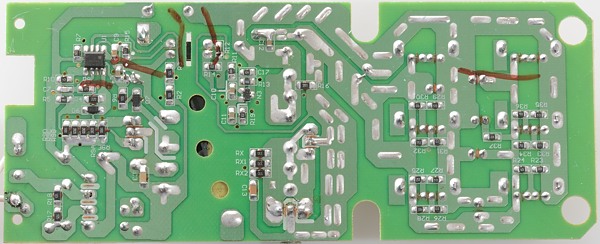
On the bottom of the circuit board is the mains switcher IC.
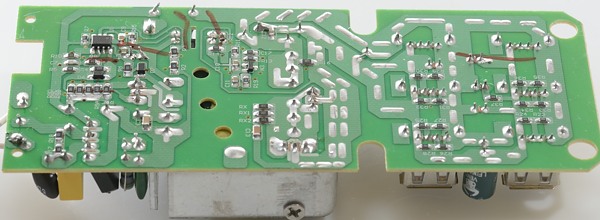
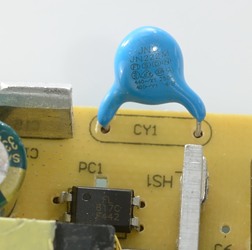
Nice, it is a safety capacitor.
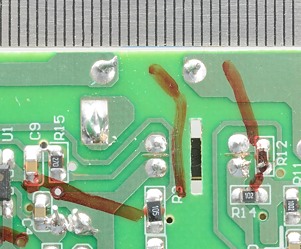
There is a fairly good distance between low volt side and mains, it looks like the shortest distance is between 4 and 5 mm, this is not enough, but fairly good.
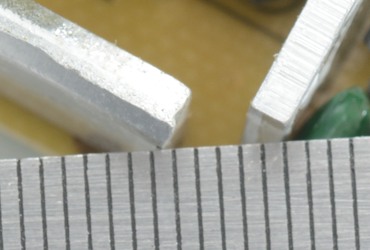
But it is not enough to have a lot of distance on the circuit board, there must be distance between parts with mains voltage and parts on the low volt side everywhere. In air the distance must be 4mm, the two heat sinks are a bit too close and there is no protection agains hard bumps (They do go down to the circuit board and for that reason they need >6 mm distance).
The 5000 volt test did not fail due to this, but because voltage jumped from the mains heatsink to the transformer and then from the transformer to the low voltage diodes.
The charger passed 2500 volt test, but failed a isolation test with 5000 volt, this makes it doubtful to use with 230VAC mains.
Conclusion
This usb power supply can deliver a lot of current, but the power quality is very bad and it gets to hot. Missing individual protection on the outputs is also a problem, 10A in a single usb connector is not very good. It looks like the designer has learned something about isolation distances, but obvious not enough.
Due to the power quality and the safety I will not recommend it.
Notes
Index of all tested USB power supplies/chargers
Read more about how I test USB power supplies/charger





























